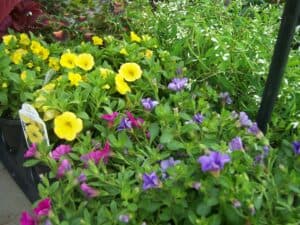
(Chelsea Update would like to thank Jennifer Fairfield, owner of The Garden Mill, for the information in this column. Part 2 will run tomorrow.)
Based on recent weather, it may not seem like winter is coming, but it’s bound to arrive eventually, so we should prepare for it.
Vegetable Garden
It’s time to clean out the garden, sad as that may be. If you had issues with disease, throw out those plants – cold-weather composting doesn’t generally produce enough heat to kill off any diseases – but definitely compost everything else.
Pull weeds to reduce the numbers in the garden next spring. Doing a light tilling to expose weed seeds and insects to hungry birds will also cut down on these problems in the spring.
Consider sowing a cover crop, such as annual rye, to help prevent erosion and to add organic matter and nutrients back into the soil in the spring. Alternatively, add compost to the garden to help improve the soil and add nutrients.
Plant spinach now for an early crop in the spring.
If you are leaving perennials such as thyme or sage in your garden over the winter, give them a good layer of mulch.
Consider doing a soil test now so that you are ready to make any adjustments to the soil that are necessary in early spring.
And, there is still time to plant garlic.
Flower Beds
There is also still time to get spring-blooming bulbs like tulips, daffodils, crocus and hyacinths in the ground. You can plant them up until the ground has frozen.
When your annuals are finished for the season, pull them out and compost them. Pull weeds out of your beds to give you a head-start on spring.
Once the soil has cooled down, add mulch to your flower beds. A layer of about 3 or 4 inches of mulch will help protect roots from temperature fluctuations throughout the winter.
You can cut back perennials and ornamental grasses once they have gone dormant, or leave them until spring. I prefer to leave mine up, partly because standing grasses and flowers can catch drifting snow and leaves and hold them in place.
I also like the look of the plants in the snow – it breaks up the vast expanses of white. Additionally, the plants can provide a place for overwintering beneficial insects and birds. However, if you had any diseases in your garden this year, cut back the foliage or pull the plants now and discard them to reduce disease risk in spring.
Keep watering your plants, whenever we are not getting at least an inch of rain per week, until the ground freezes.
(Look for part two tomorrow.)



















